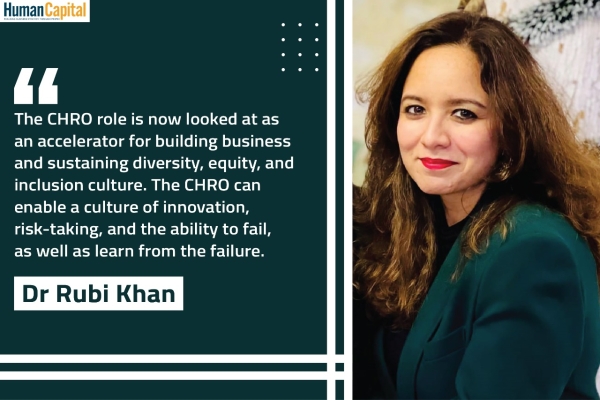It is widely accepted that decision making and related processes are cognitive in nature. However, there is enough evidence that our feelings drive our decisions in more ways than we are aware of.
Several thought leaders have established a clear link between leadership and selfawareness
♦ Leaders who are self-aware
♦ Know their strengths and weaknesses
♦ Understand the motivation for their drive
♦ Remain in sync with their feelings and emotions
Thus, they are sensitive to the impact they are creating on others. Being self-aware makes one empathetic and emotionally connected with the people one interacts with. Leaders who are successful in establishing this emotional connect with their teams can motivate them to greater heights, and thus, achieve sustained success. All this seems straightforward and logical, but one would hazard that there is more than what meets the eye here. If it were to be so simple then one is likely to come across several leaders who are self-aware. However, we have experienced the fact that there are far too many leaders who are found to be lacking such an important facet among leadership skills as compared to those who do.
So, how does one develop selfawareness? Is this an inborn trait that cannot be developed? And, if it can be developed, is there a methodology that one must follow? How does one realise if one is selfaware? Is it a long process? Certain self-awareness processes that have proved to be right have been mentioned below. Though presented in a certain order, the three steps outlined below are interchangeable.
1. To Question Oneself
Once, there lived a wise old monk at the top of a mountain. One fine day, a young man, who was in search of wisdom, arrived at his doorstep. He was highly educated and erudite and therefore wanted to embellish his knowledge with the crowning glory of wisdom. The old monk offered him tea and while pouring it into the young man’s cup, he did so until it overflowed. Reacting to the young man’s annoyance, the old wise monk said since the cup must be empty to make room for more tea, the young man was required to empty his cup to accept something new.
One faces several challenges during her leadership journey. The leader overcomes these challenges through the dint of effort and deep conviction in her beliefs, methods, and decisions. This process reinforces the thought that we must possess the convictions and the perseverance to stay with these convictions and beliefs. While this is truly required to demonstrate authentic leadership, one must develop the habit of questioning one’s beliefs, judgement, and decisions from time to time.
Hubris is an insidious way of operating and develops blind spots among the best of us. Knowing and being aware of this is important for a leader as it then allows him or her to re-examine the situation and her response to it. Information and judgement could change over time. The information available now could be different from what we had during the time of decision-making. Our experiences and beliefs could have changed in the ensuing time, thereby, impacting our sense of judgement. Clearly, this is enough reason to revalidate our assumptions, challenge our judgement, and finally, reassess our decisions. This questioning and sometimes backtracking requires courage which leaders need to demonstrate by being emotionally detached from their decision. Confirmation bias remains as one of the most common pitfalls in cognitive thinking where one tries to find “evidence” which supports “his” decision and conveniently ignores information that may prove otherwise.
2. Reflection
A leader must find time to reflect. She must reflect on her strengths, weaknesses, the motivation behind decisions, emotional makeup, and the impact her responses create on others. One is aware of these at an intuitive level. However, a successful leader must have the ability to raise this intuitive knowledge to a conscious level where she can articulate this lucidly. If one is successful in doing this, then one can truly get in touch with one’s inner self and raise one’s awareness to a higher level. The Johari window model gives us a simple but effective framework for understanding ourselves. The ‘blind area’ in the model – an area where others know more about ourselves than us – is an area that can be reduced by seeking feedback.
Seeking feedback requires openness to question ourselves and the courage to accept some unpleasant truths. This is an important source for self-reflection and introspection. The most difficult area to tackle in the Johari window model is the ‘hidden area’ – an area that is unknown to both our colleagues as well as us. This is an important area as many of our subliminal biases and past conditioning that drive present behaviours sit here. It is not natural for many of us to access this, but this is where a coach or a sparring partner has a major role to play. A coach does not provide any answers, but only asks the right questions. The process of finding the answers is through dialoguing which has the potential of increasing one’s self-awareness immensely.
3. Action
This is the stage when one tries to implement certain changes which have been concluded as required in the quest to becoming an inspirational leader. One must take risks and take the plunge. Risk-taking is a key attribute for any successful leader - No risk, no reward. These risks are more inclined to the nature of changing the process of decisionmaking, changing the strategic direction, personnel decisions, etc. An important part of this step of action is the feedback loop. Any change in one’s approach is a change in the stimulus which evokes a change in response. It is critical that this process is well monitored and documented. It tells us what works and what does not, and, more importantly, why. This information provides additional information that can be used in the process of selfawareness while reflecting or dialoguing with a sparring partner or coach. Here, it is important to get an impression of one’s feelings about the change. It is widely accepted that decisionmaking and related processes are cognitive in nature. However, there is enough evidence that our feelings drive our decisions in more ways than we are aware of. This is counterintuitive and is hence likely to be missed.
Mahatma Gandhi comes across as one of the most self-aware leaders that one has studied. He relentlessly pursued the quest of understanding himself through questioning, deep introspection, and experimentation with audacious approaches to leadership with the courage to discard that which does not fit his own ever nuanced understanding of his values, motivations, and convictions. This is brilliantly chronicled in ‘My Experiments with Truth.’
“Carefully watch your thoughts, for they become your words. Manage and watch your words, for they will become your actions. Consider and judge your actions, for they have become your habits. Acknowledge and watch your habits, for they will become your values. Understand and embrace your values, for they become your destiny” –Mahatma Gandhi
Follow us on LinkedIn, Facebook, Instagram, Twitter for latest HR news and insights
Is your organisation post-COVID-ready?
Trending
-
SBI General Insurance Launches Digital Health Campaign
-
CredR Rolls Out 'Life Happens' Leave For Its Employees
-
Meesho Announces 30-Week Gender-Neutral Parental Leave Policy
-
Microsoft Unveils Tech Resilience Curriculum To Foster An Inclusive Future
-
60% Indian Professionals Looking For Job Change Due To COVID: Survey
-
SpringPeople And Siemens Collaborate For Digital Transformation Push
-
86% Professionals Believe Hybrid Work Is Essential For Work Life Balance: Report
-
Almost 1 In Every 3 People's Personal Life Affected Due To Work Stress
-
Meesho Rolls Out Reset And Recharge Policy For Employees
-
80% Of Talent Leaders & Academics Say Pandemic Changed Skill Needs For Youth: Report
-
Hero Electric Rolls Out 'Hero Care' Program For Employees
-
Human Capital In Collaboration With ASSOCHAM Hosts Virtual Conference
-
IKEA India, Tata STRIVE Collaborate To Create Employability And Entrepreneurship Opportunities
-
SAP India, Microsoft Launch Tech Skilling Program for Young Women
-
DXC Technology, NASSCOM Collaborate For Employability Skills Program
-
Lenskart To Hire Over 2000 Employees Across India By 2022
-
Mindtree Launches Learn-and-Earn Program
-
Tata AIA Extends 'Raksha Ka Teeka' To Its Employees
-
Swadesh Behera Is The New CPO Of Titan
-
NetConnect Global Plans To Recruit 5000 Tech Professionals In India
-
Hubhopper Plans To Hire 60% Of Indian Podcasters By 2022
-
Corporate India Needs More Women In Leadership Roles: Report
-
Aon to Invest $30 Million and Create 10,000 Apprenticeships by 2030
-
Tech Mahindra Launches ‘Gift a Career’ Initiative for Upskilling of Youth
-
40% Women Prefer Flexible Working Options in Post-COVID World: Survey
-
3 out of 4 companies believe they can effectively hire employees virtually: Report
-
Vodafone , CGI and NASSCOM Foundation launch digital skills platform
-
Odisha: Bank, postal employees to deliver cash for elderly, differently-abled persons
-
Skill India launches AI-based digital platform for "Skilled Workforce"
-
Hiring activity declines 6.73% in first quarter: Survey
-
70% startups impacted by COVID-19 pandemic
-
Bajaj Allianz Life ropes in Santanu Banerjee as CHRO
-
Over 70 Percent MSMEs look at cutting jobs to sustain businesses
-
93 Per Cent employees stressed about returning to office post-lockdown
-
Johnson & Johnson India announces family benefits for same gender partners
-
Indian firms turning friendly towards working mothers
-
Welspun India names Rajendra Mehta as new CHRO
-
Wipro partners with NASSCOM to launch Future Skills platform



Human Capital is niche media organisation for HR and Corporate. Our aim is to create an outstanding user experience for all our clients, readers, employers and employees through inspiring, industry-leading content pieces in the form of case studies, analysis, expert reports, authored articles and blogs. We cover topics such as talent acquisition, learning and development, diversity and inclusion, leadership, compensation, recruitment and many more.
Subscribe Now













































Comment